Calleta silkmoth
Eupackardia calleta
The Calleta moth, Eupackardia calleta, is native to the American southwest, where it feeds on purple sage. Luckily for me, they are flexible, and willing to eat Ligustrum ovalifolium (common privet). I am very grateful to Dr. Ric Peigler for his help and support in this project!
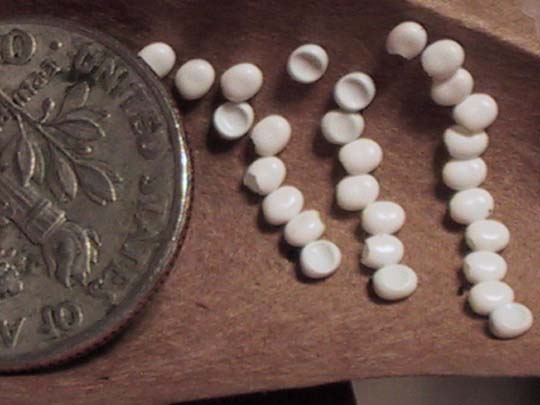
The eggs are medium-large; they're not quite as large as Cecropia, but bigger than Ricini or Bombyx. They are shiny white, and remind me of Chiclets gum. These have hatched already; you can see the ones that failed to hatch and are going concave (center top) and some of the hatched ones are visibly open at one end. April 25, 2004.
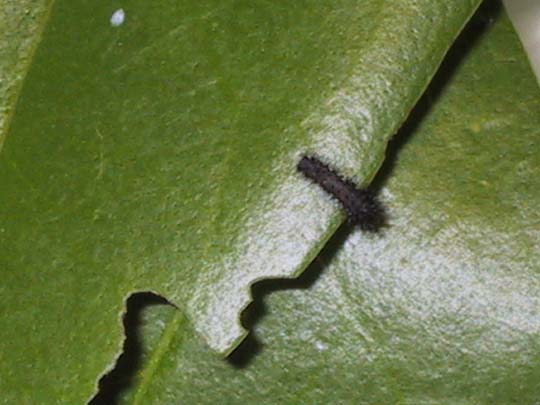
The first instar Calleta caterpillars are just little black hairy dashes. They are very vigorous - they wander around a lot before settling down to eat. April 25, 2004.

These caterpillars have just changed into the second instar; you can see the first instar skins still attached to the leaf. They are very fast eaters; they really chew into the ligustrum leaves. April 29, 2004.
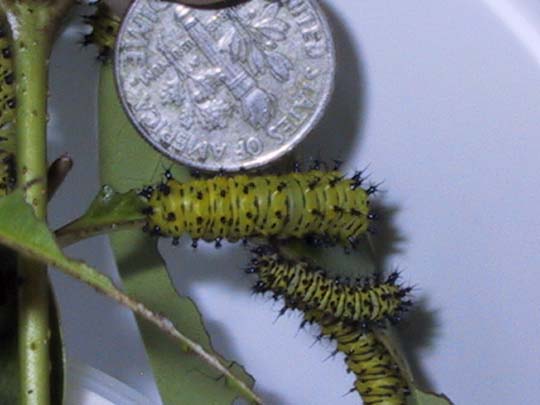
May 3, 2004. The worms are shifting into the third instar now; they are growing at very different rates.

This is the fourth instar. They are becoming more and more colorful. May 10, 2004.

Some of the caterpillars have already changed into the fifth instar; you can tell by the blue knobs. They are brilliantly colorful; some of them have even more colors than this.
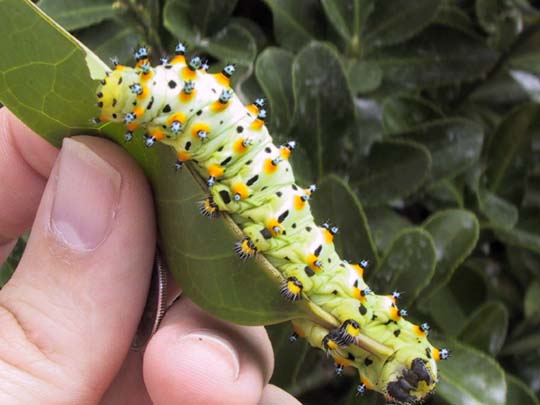
Here's a large fifth-instar larva stretched out on a leaf. May 12, 2004.
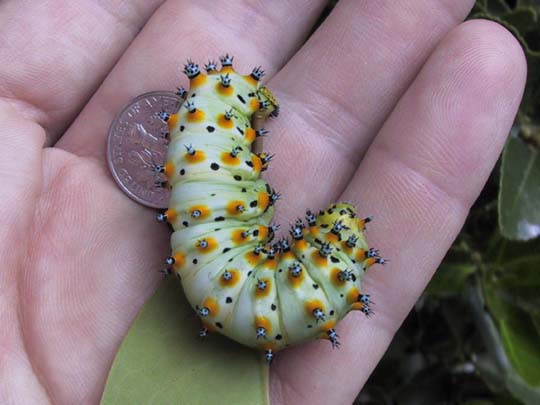
The worm didn't want to pose with the dime, and kept trying to curl up. May 12, 2004.

May 18, 2004 - the first of the calleta caterpillars starts to spin. It begins by making a silk peduncle on the stem, and then working its way down and making a little basket for its head, and then spinning that more and more solid.
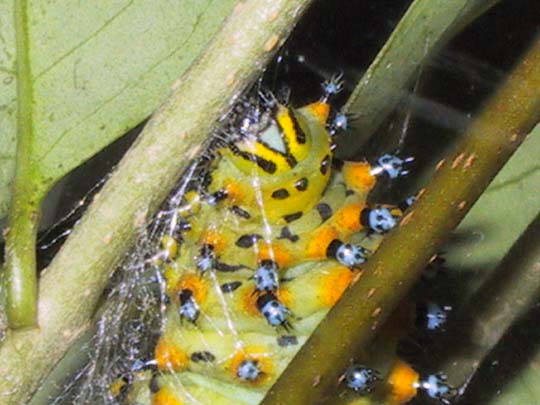
Here, the worm is reinforcing the top of the growing cocoon.
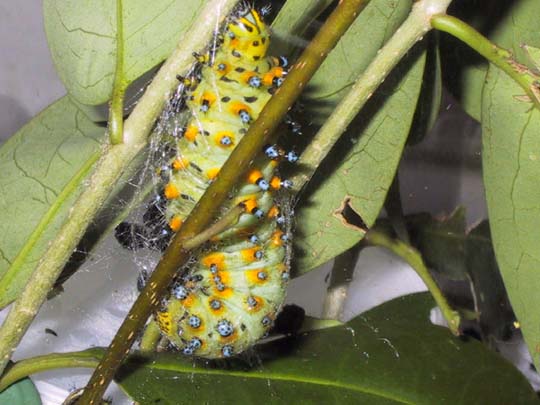
The cocoon is taking shape bit by bit. Unfortunately, I missed the part where it grew solid and opaque - I had to go to bed! May 18, 2004.
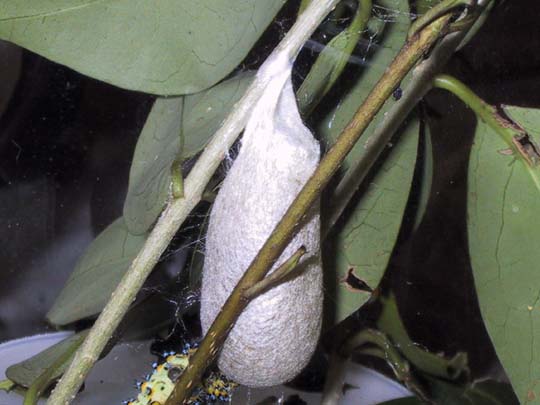
And here's the almost-finished cocoon! It's still open at the top; you can look in and see the worm still at work. Unfortunately, that doesn't show up all that well with the camera. May 19, 2004.
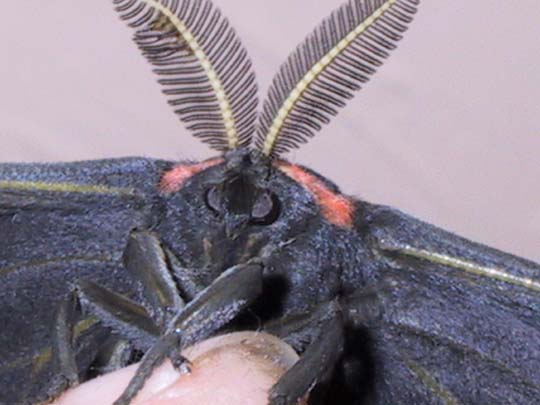
July 29, 2004. This exotic-looking face greeted me this evening - I was kind of surprised to see him, because I thought the cocoon would overwinter! Calleta moths often spend up to two years in the cocoon, waiting for perfect conditions. It's an exquisitely beautiful moth. The first impression is that it's just black, but there's a lot going on color-wise with its wings and its fur. This face kind of reminds me of a "Zorro" costume.
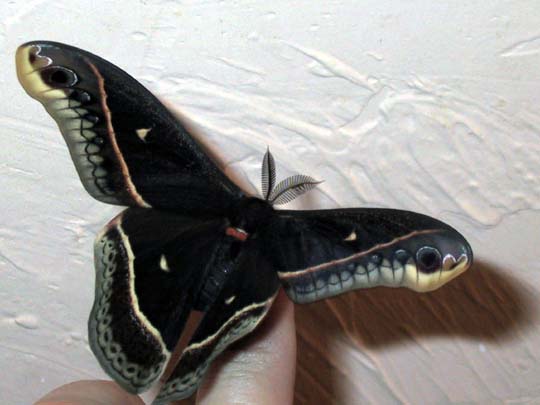
This is the "up" position - he keeps fanning his wings up and down.
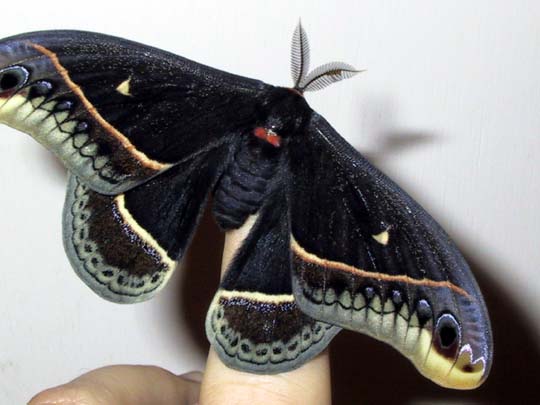
And this is down.

This is the tip of the forewing; it gives you an idea of the range of subtle color in the moth.
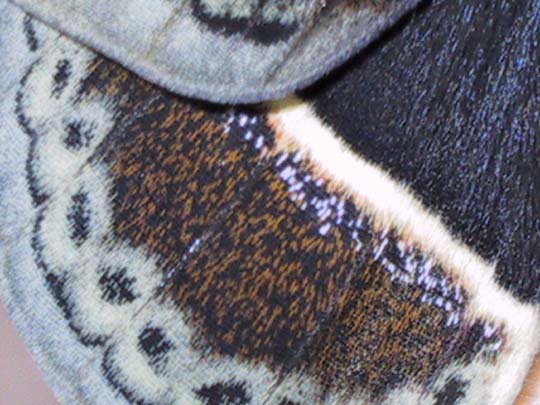
This is the hindwing. The little flecks are a pale lavender, and the edging reminds me of lace or tatting. Because I only have 2 cocoons that survived, I'm not expecting a pairing. I might raise it again, if I have a chance, but this is the end of the story for now.